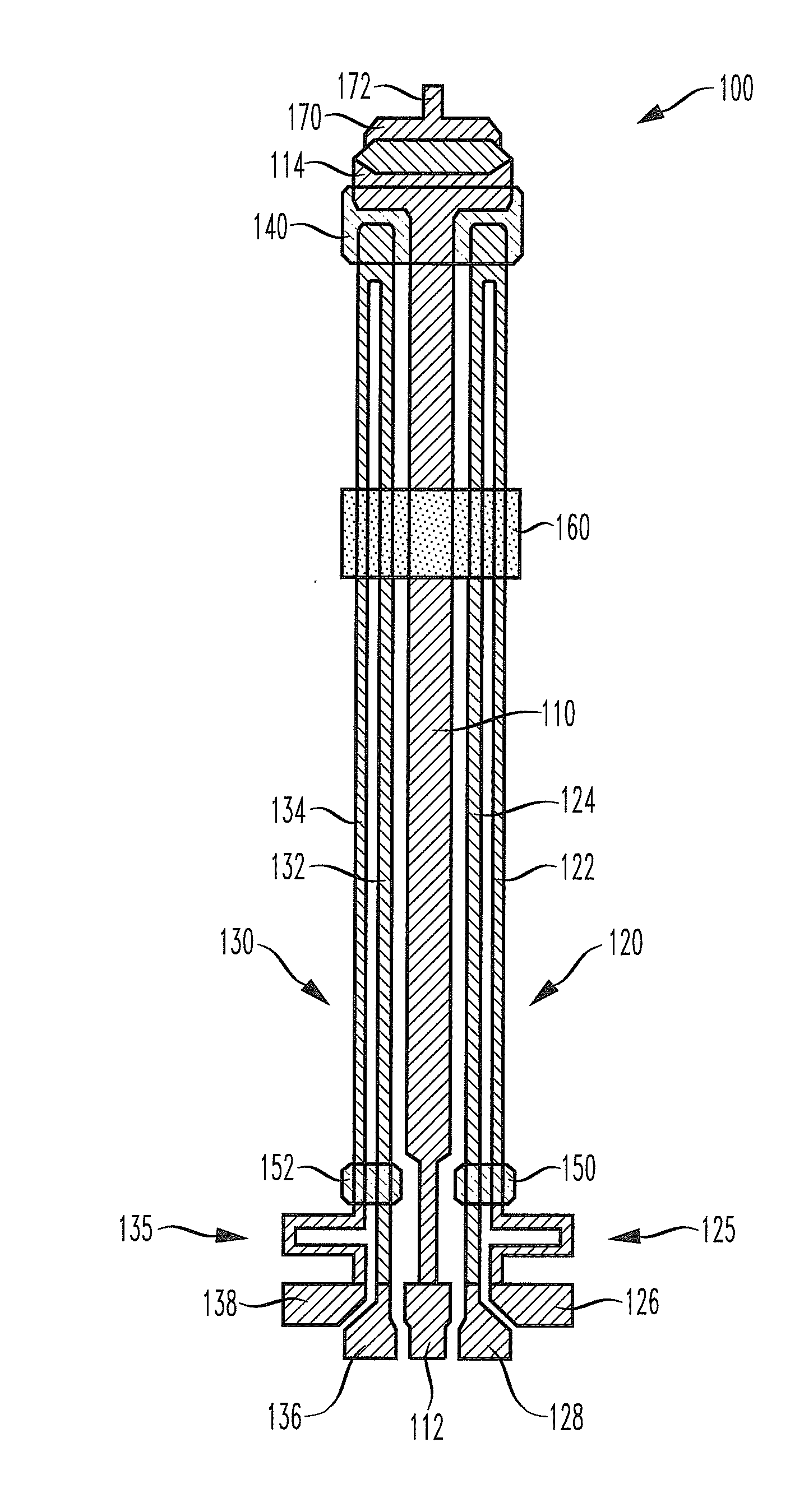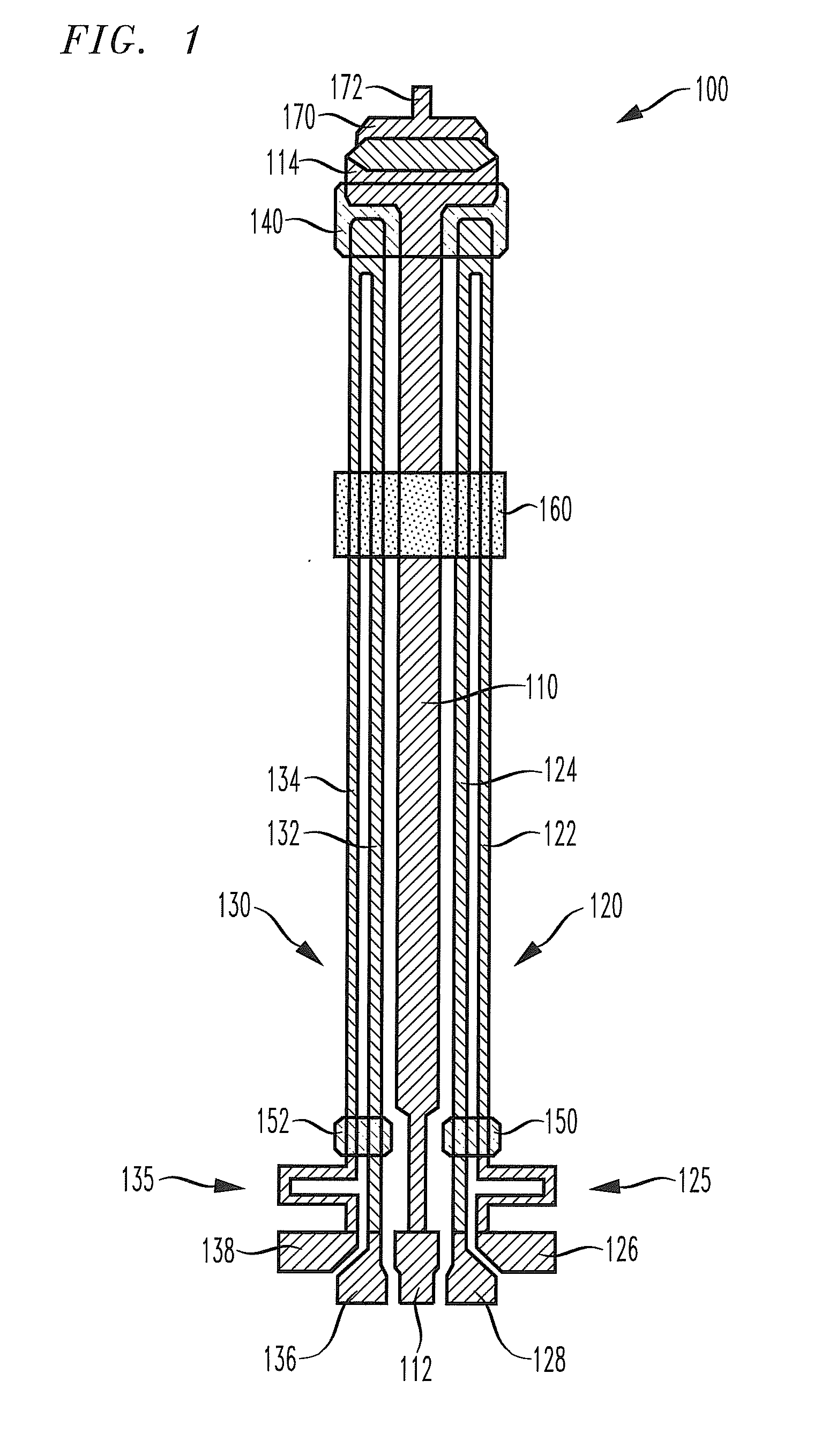MEMS device with bi-directional element
a technology of mechanical devices and components, applied in the direction of protective switch operating/release mechanisms, protective switch details, etc., can solve the problems of conventional microelectromechanical devices not meeting the needs of the telecom industry, and the switch or relay of microelectromechanical devices can be rendered unusable over tim
- Summary
- Abstract
- Description
- Claims
- Application Information
AI Technical Summary
Benefits of technology
Problems solved by technology
Method used
Image
Examples
Embodiment Construction
[0015]FIG. 1 illustrates a bi-directional microelectromechanical element 100 that contains a cold beam 110, a first beam pair 120, a second beam pair 130, and a free end tether 140. In some embodiments, the cold beam 110 can have a variable width, i.e., a tapered beam or can have two or more sections with different widths. The cold beam 110 has a first end connected to a cold beam anchor 112 and a free end 114. The free end 114 of the cold beam 110 is attached by conventional means to free end tether 140. The cold beam anchor 112 is attached by conventional means to a substrate (not shown). The cold beam 110 is typically made of a metal such as nickel. A portion of the bi-directional microelectromechanical element 100 is located over a trench in the substrate (not shown).
[0016]The first beam pair 120 is parallel to the cold beam 110 and is comprised of two parallel members, a first beam member 122 and a second beam member 124, each having a first and second end. The first end of eac...
PUM
 Login to View More
Login to View More Abstract
Description
Claims
Application Information
 Login to View More
Login to View More - R&D
- Intellectual Property
- Life Sciences
- Materials
- Tech Scout
- Unparalleled Data Quality
- Higher Quality Content
- 60% Fewer Hallucinations
Browse by: Latest US Patents, China's latest patents, Technical Efficacy Thesaurus, Application Domain, Technology Topic, Popular Technical Reports.
© 2025 PatSnap. All rights reserved.Legal|Privacy policy|Modern Slavery Act Transparency Statement|Sitemap|About US| Contact US: help@patsnap.com



